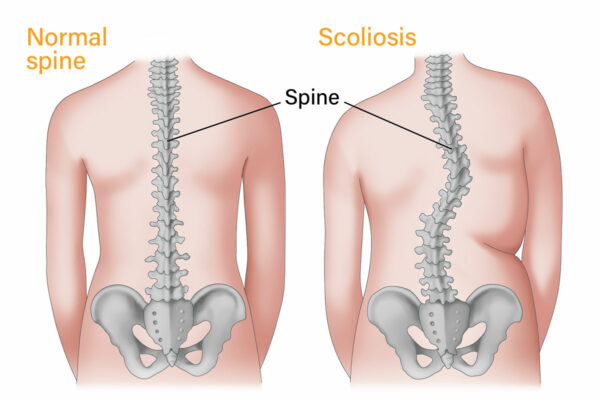Scoliosis is a medical condition described by an abnormal curvature of the spine. It affects people of all ages but is most commonly diagnosed in children and adolescents. In Bangladesh, the awareness and understanding of scoliosis have improved over the years, leading to better access to treatment options. This article aims to provide essential information about scoliosis treatment in Bangladesh, including the types of treatments available, diagnosis, and tips for managing the condition.
Understanding Scoliosis
Scoliosis can develop for various reasons, including congenital factors (present at birth), neuromuscular conditions (such as cerebral palsy), or idiopathic causes (of unknown origin). The spine’s curvature may result in various symptoms, including back pain, uneven shoulders or hips, and, in severe cases, respiratory problems. Early findings and treatment are crucial in managing scoliosis effectively.
Diagnosis of Scoliosis
Find out typically begins with a physical check by a doctor or nurse, who will look for signs of scoliosis, such as uneven shoulders or a prominent rib cage. If scoliosis is suspected, the following diagnostic methods may be employed:
- X-rays: The most common imaging technique used to determine the degree of spinal curvature.
- MRI: Sometimes recommended to rule out the conditions that may contribute to scoliosis.
- CT scans: These are useful for providing detailed images of the spine.
Treatment Options in Bangladesh
Treatment for scoliosis varies depending on the curve’s severity and the patient’s age. Here are the primary treatment options available in Bangladesh:
- Observation
Doctors may recommend regular monitoring without immediate intervention for mild cases of scoliosis, particularly in children. This approach allows for tracking any changes in curvature over time.
- Bracing
For moderate scoliosis, particularly in growing children, bracing is often prescribed. A brace is designed to prevent further spine curvature as the child grows. Common types of braces include:
- TLSO (Thoraco-Lumbo-Sacral Orthosis): A rigid brace that supports the thoracic and lumbar spine.
- Boston Brace: A custom-molded plastic brace worn under clothing.
Supporting is most effective when the patient is still growing, as it can halt the progression of scoliosis.
- Physical Therapy
Physical therapy plays a crucial role in caring for scoliosis. A trained physiotherapist can develop a customized exercise plan to improve flexibility, strength, and posture. Techniques may include:
- Strengthening exercises: Targeting core muscles to support the spine.
- Stretching exercises: To loosen up muscles and make them more flexible.
- Postural training: Encouraging proper alignment and posture during daily activities.
- Surgical Intervention
In severe cases, surgical options may be thought about, especially when the curvature is significant (generally over 45-50 degrees) and causing discomfort or complications. The most common surgical process is spinal fusion, which involves:
- Fusing vertebrae: Bone grafts and metal rods stabilize the spine and correct the curvature.
- Decompression: Sometimes, the surgeon may remove bone or tissue pressing on nerves.
Availability of Treatment in Bangladesh
Several hospitals and specialized clinics in Bangladesh have emerged in recent years, offering advanced scoliosis treatment options. Some notable facilities include:
- Dhaka Shishu Hospital: Known for its pediatric care, including scoliosis assessment and treatment.
- Bangladesh Orthopaedic Society: Provides resources and referrals for scoliosis treatment.
- Private clinics and physiotherapy centers: Offer bracing, physical therapy, and consultation services.
Conclusion
Scoliosis is a manageable condition with various treatment options available in Bangladesh. Early detection and intervention can significantly impact the quality of life for people affected by scoliosis. If you suspect scoliosis or have been diagnosed, it is Important to consult with a healthcare professional to determine the best course of action. With proper treatment, many individuals with scoliosis can lead healthy and active lives.

